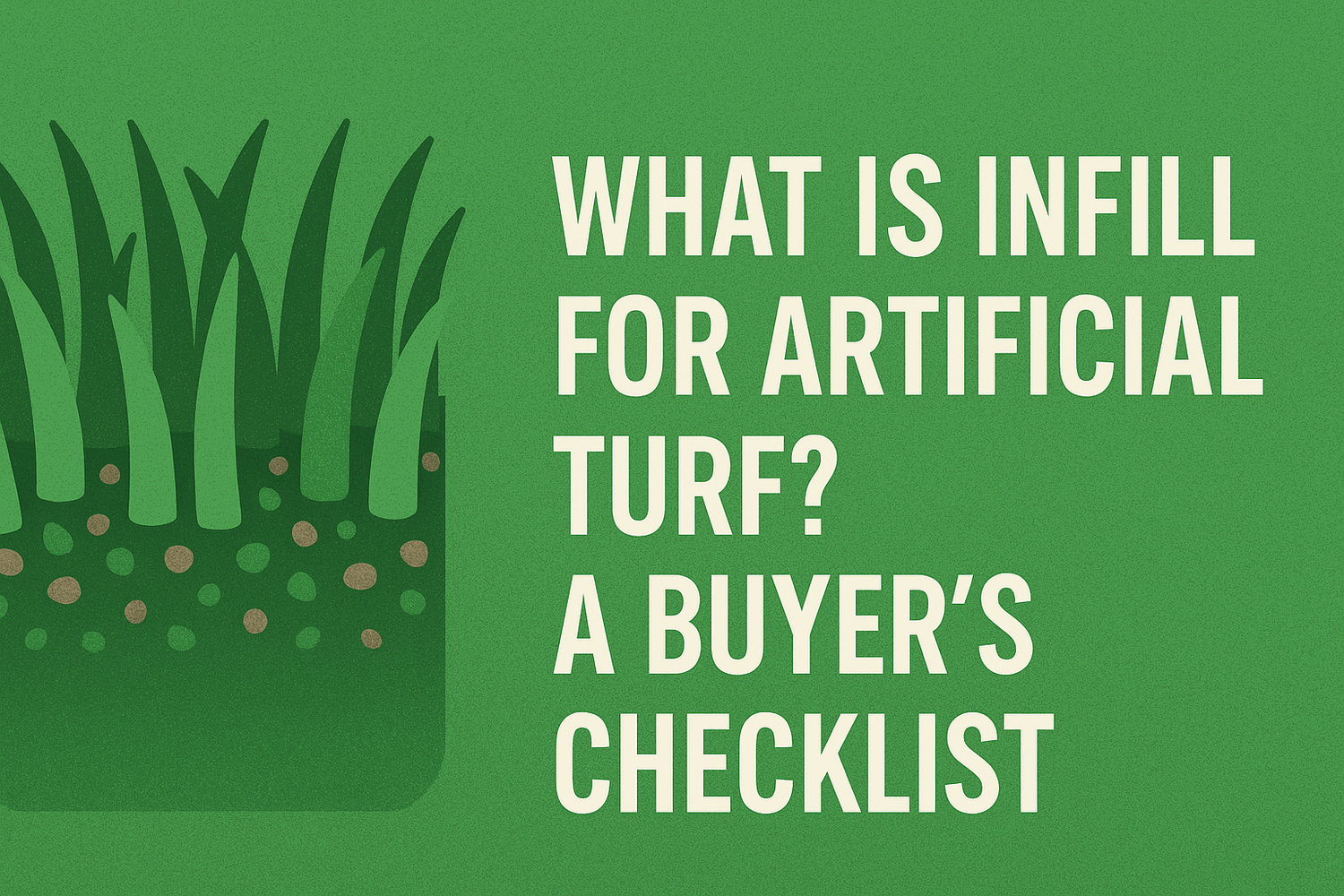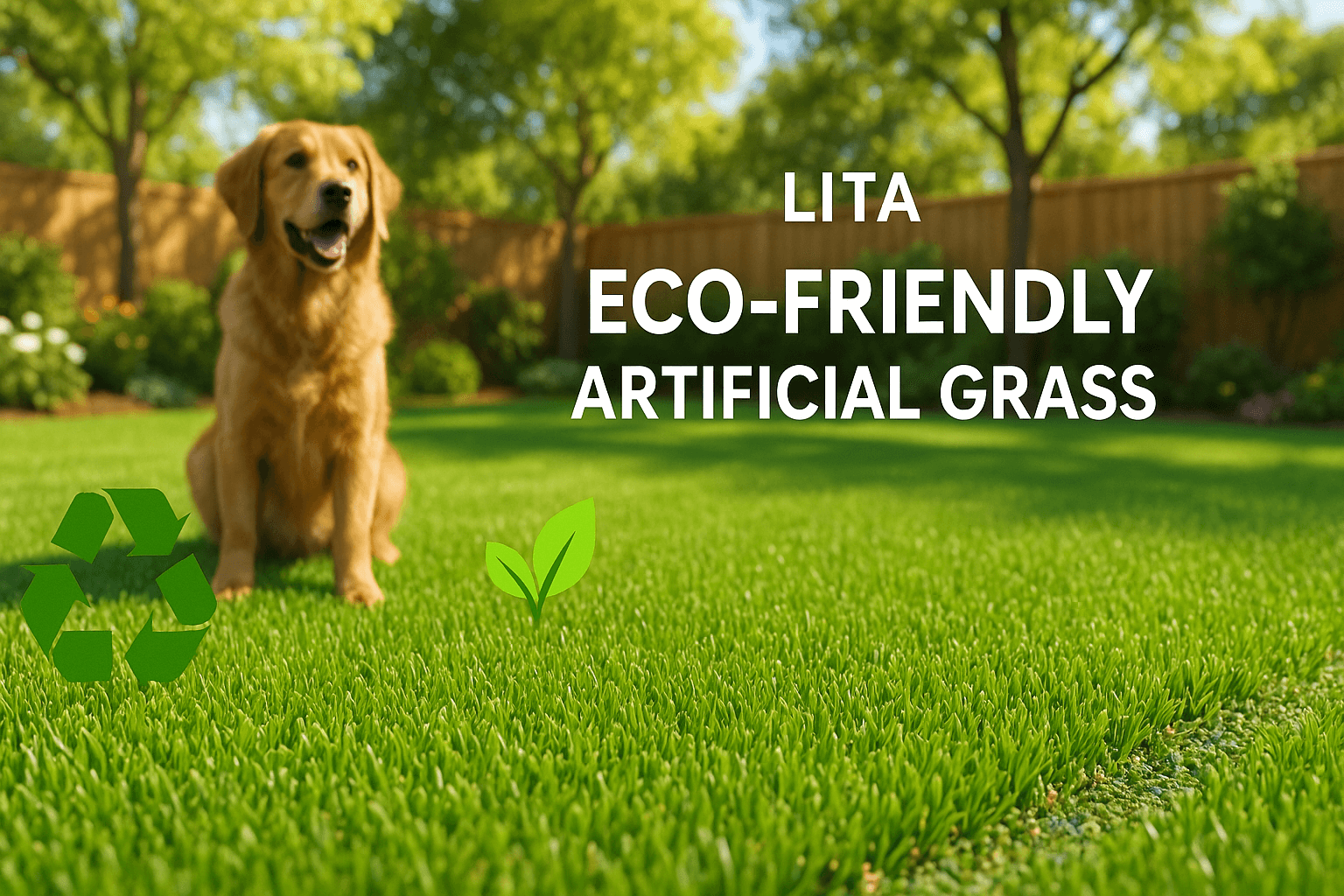Thinking about getting artificial grass for your home, sports field, or pet area? There’s one important part many people forget about—the infill.
So, what is infill for artificial turf? It’s the material added between the blades of synthetic grass. It keeps the turf in place, supports the blades, and helps with comfort, drainage, and safety.
Even though it’s small, infill plays a big role. Picking the right one can affect how your turf feels, looks, and lasts over time.
In this article, we’ll explain what infill does, the different types you can choose from, and how to decide what works best for you. Whether you want a soft lawn for your kids or a cool surface for your pets, this guide will help.
What Is Infill for Artificial Turf?
Infill is the loose material added between the blades of artificial grass. It sits deep in the turf and helps it look and work more like real grass.
Now, what is infill for artificial turf, exactly? It can be made from sand, rubber, cork, or other small particles. These materials are spread across the turf during installation and brushed into place.
Infill has a few key jobs:
- It adds weight to keep the turf from moving.
- It helps the grass blades stand up straight.
- It softens the surface so it’s nicer to walk or play on.
- It helps water drain better.
Why Infill Matters in Turf Installations
Infill may look like small grains of sand or rubber, but it plays a big role in how artificial grass works. Whether you’re setting up a home lawn or a large sports field, infill helps the turf stay strong and last longer.
When people ask, what is infill for artificial turf, they’re really asking why it’s so important. Here’s why it matters:
- Blade support: Infill holds up the turf fibers, so they don’t fall flat. This keeps your turf looking fresh and full.
- Safety and comfort: It softens the surface and helps reduce injuries during play.
- Drainage: Good infill allows water to pass through, which keeps the turf dry and clean.
- Weight: It adds enough weight to keep the turf from shifting or wrinkling over time.
- Durability: Infill protects the artificial grass blades from wear caused by foot traffic.
Different Types of Infill for Artificial Turf
There are many kinds of infill you can use. Each type has its own feel, cost, and purpose. Some work better for pets, while others are made for sports or backyards.
Here are the most common types of infill:
1. Silica Sand
This is a basic and affordable choice. It’s just regular sand that helps the turf stay in place. It works well for artificial grass installations, but it doesn’t do much to cool the surface or stop odors.
2. Crumb Rubber
This type is made from recycled tires. It feels soft and is often used on athletic fields. It helps with shock absorption but can get hot and may smell over time.
3. Organic Infills
These are made from natural materials like cork or coconut fiber. They are better for pets and the environment. Many of them offer evaporative cooling, which helps lower the surface temperature on hot days.
4. Acrylic-Coated Sand
This sand has a special coating. Some brands include antimicrobial properties to help reduce the growth of bacteria and pet odors. These are great for homes with kids or animals.
When people ask, what is infill for artificial turf, this list is a good starting point. The best choice depends on how you plan to use your turf and what features matter most to you.
Infill and Surface Temperature: Does It Affect Heat?
Some people worry that artificial grass gets too hot in the sun. And they’re right—it can. But the type of infill you use makes a big difference.
Certain infills, like crumb rubber, can raise the surface temperature a lot. On a hot day, the turf might feel uncomfortable for bare feet or pets.
Other infills are cooler. For example, organic infills made from cork or coconut can help with evaporative cooling. These types soak up some water and slowly release it, which helps lower the heat. Acrylic-coated sand also stays cooler and often includes antimicrobial properties to stop smells and bacteria.
If you live in a warm area or want turf for kids and pets, heat matters. Think about where the turf is placed—sun or shade—and what kind of artificial turf products you’re using.
Choosing the Right Infill for Your Needs
Not all turf is the same. And not all infill works for every situation. To choose the best one, think about how you’ll use the turf and who will walk or play on it.
If you have pets, pick an infill that controls pet odors. Some pet-friendly infill types come with antimicrobial properties. These help stop bacteria growth and reduce smells from pet waste.
For kids, you’ll want something soft and safe. Crumb rubber and organic infills like cork or coconut fiber are good picks. They offer cushion and help with safety during falls.
If you're building athletic fields, you’ll need a tough infill that handles heavy foot traffic. Rubber infills or acrylic-coated sand are often used in sports areas because they support the turf and last longer.
In wet areas, you want excellent drainage. Sand-based or organic material infills usually work well for this.
If you’re not sure which type fits your space, it helps to talk to a brand that knows turf inside and out. LITA, for example, offers a range of artificial turf and infill options for different needs, including yards with pets, sports areas, and more. They also provide guidance to help you make the right choice, so you don’t have to figure it all out alone.
Infill for Artificial Turf in Different Settings
Infill isn’t just for backyards. It’s used in many places, and each setting needs something a little different.
Home Lawns
For residential applications, comfort and clean looks matter most. People often choose sand or natural infills that make the turf feel soft and stay cool. It’s great for kids, pets, and relaxing outside.
Athletic Fields
In athletic fields, infill must handle hard play and heavy use. That’s why many sports fields use crumb rubber or acrylic-coated sand. These infills help protect players and keep the turf from wearing out.
Commercial Installations
For commercial spaces, turf needs to look good and stay strong with lots of visitors. A heavier infill works best here. It helps the turf handle more foot traffic and keeps the blades standing tall.
How Much Infill Do You Need?
Once you choose your infill, the next question is: how much do you need?
The amount depends on the type of turf, the type of infill, and the size of the area. A good rule of thumb is about 2 to 3 pounds of infill per square foot. Some turf may need more if it has longer synthetic grass blades or will be used for sports.
Heavier infill adds more weight, which helps the turf stay in place. But it can also feel harder underfoot. Lighter infill is easier to install but may need more infill replenishment over time.
You can buy infill by the bag, and many brands will tell you how many pounds of infill you need based on your project size.
Infill Maintenance and Safety Tips
Infill doesn’t need much care, but some upkeep is still important. If you want your turf to last and stay clean, you should know a few simple tips.
First, always check the turf after heavy rain or strong wind. Sometimes the infill moves around and needs to be brushed back in place.
Over time, you may also need to add more infill. This is called infill replenishment. Areas with lots of foot traffic, like walkways or play zones, may wear down faster.
For safety and health, choose infill with antimicrobial properties, especially if pets or kids will use the space. These types help stop bacterial growth, reduce the chance of skin irritation, and control bad smells caused by odor-causing bacteria.
In warm areas, use cooling infills to lower surface temperature. Some infills even have special coatings to keep the turf cooler and safer during summer months.
Quick Infill Buyer’s Checklist
Choosing the right infill doesn’t have to be hard. Just keep a few things in mind. This list can help you pick the best one for your space.
Infill Checklist:
- Use: Is it for pets, kids, sports, or just looks?
- Smell control: Need help with pet odors or unpleasant smell?
- Cooling: Do you live in a hot area? Look for cooling infill or evaporative cooling options.
- Safety: Want something soft or with antimicrobial properties for better health?
- Drainage: Pick something that offers excellent drainage for rainy places.
- Budget: How much are you willing to spend?
- Maintenance: Do you want something that’s easy to care for?
- Weight: Lighter infill is easier to install, but heavier infill may last longer.
Conclusion
Infill may seem like a small detail, but it does a big job. It helps your turf look real, feel soft, and last longer. Whether you’re using turf for play, pets, or sports, the right infill makes a big difference.
We’ve answered the question what is infill for artificial turf and looked at how it works, what types are out there, and how to choose the best one.
If you’re ready to explore real options, LITA offers a variety of artificial turf and infill choices to match different needs and spaces. Whether you're working on a backyard, pet area, or sports field, their team is there to help you choose what fits best—without the guesswork.
You can visit litagrass.com to learn more or get in touch with someone who can guide you through the next step.



Leave a comment
This site is protected by hCaptcha and the hCaptcha Privacy Policy and Terms of Service apply.